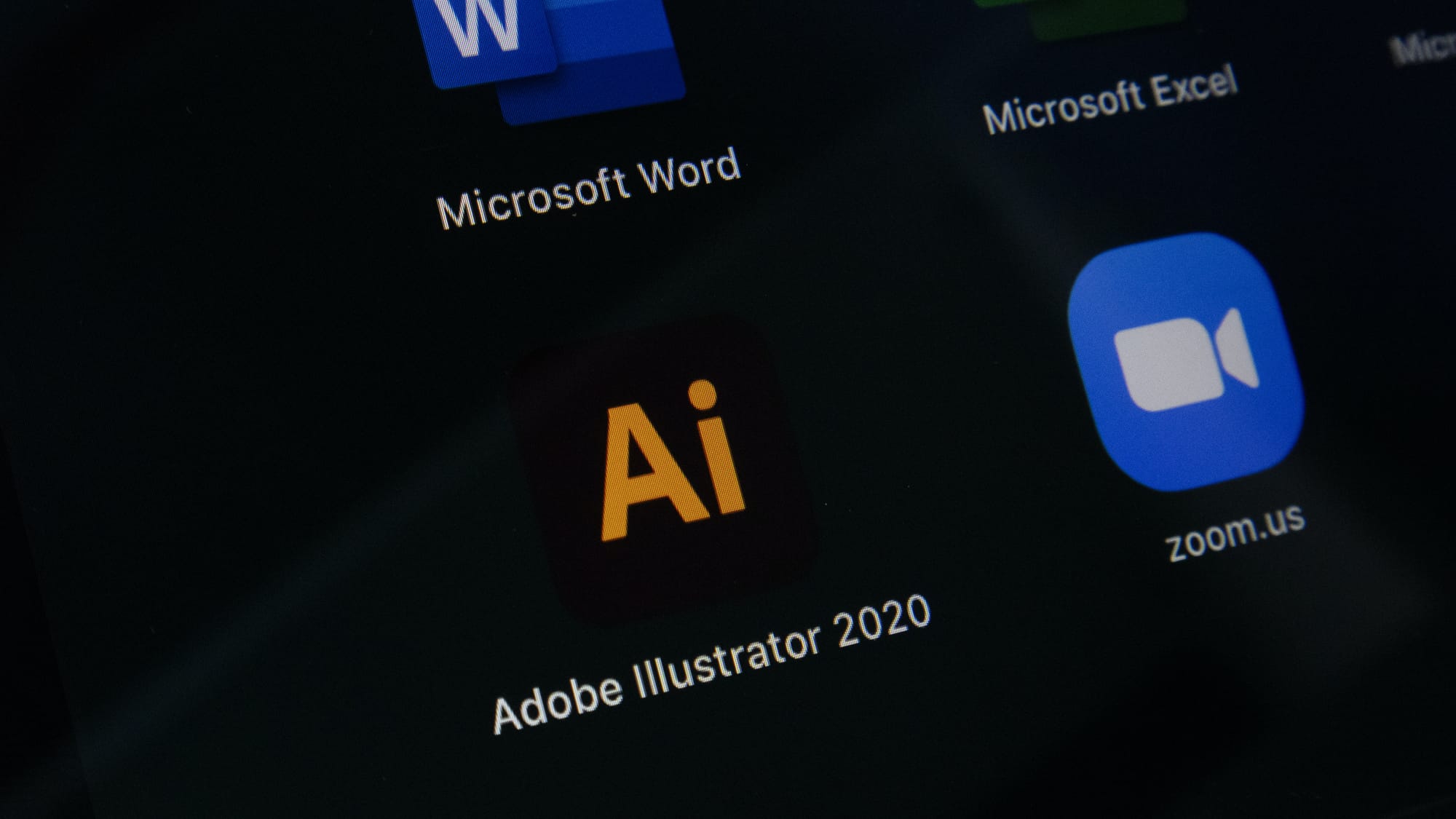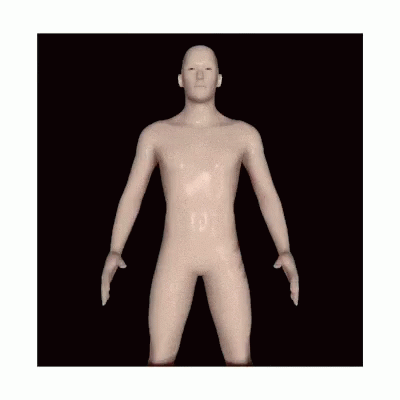3D Animation Software For Beginners
Find a 3D program that's perfect for people just starting out with animation. It's simple to use, so you can begin creating animations without any hassle!

With animation and VFX playing a key role in various industries, including film, advertising, and gaming, mastering these tools can open doors to exciting opportunities. So, if you're a beginner looking to break into the animation and VFX industries, this list of 23 great animation software tools is a great starting point for your creative journey.
What Is 3D Animation?
3D animation is a powerful technique that brings virtual characters and objects to life in a three-dimensional space. Unlike traditional 2D animation, which only allows movement on a flat plane, 3D animation allows for the creation of realistic and dynamic structures, giving more depth and realism to the final animation.

This technique involves the use of specialized software that enables animators to model, rig, and animate characters and objects in a 3D environment. With 3D animation, animators can create lifelike movements, intricate details, and realistic lighting effects, making it a popular choice for movies, video games, advertisements, and other forms of visual content.
Why Should You Learn 3D Animation?
Learning 3D animation can offer a multitude of job opportunities and the potential for higher pay. While the time it takes to learn varies, self-learning is possible. However, investing in proper training can provide distinct advantages. So, don't miss the opportunity to learn 3D animation and discover all the cool things you can create!
Can You Learn 3D Animation On Your Own?
Learning 3D animation on your own is certainly possible thanks to the abundance of online tutorials and resources available. With dedication and practice, anyone can acquire the necessary skills to enter the world of 3D animation. However, it is important to note that proper training can yield faster and more efficient results.
How Long Does It Take To Learn 3D Animation?
The time required to learn 3D animation depends on various factors such as time commitment, energy investment, and access to proper training. While self-teaching is possible, formal education programs can provide faster results and help avoid common mistakes. By investing in proper training, individuals can accelerate their learning process and achieve their animation goals more efficiently.
What Is The Best 3D Animation Software For Beginners?
When it comes to choosing the best 3D animation software for beginners, there are several factors to consider.
Beginners often look for software that is:
- Easy to use
- Offers a user-friendly interface
- Provides ample resources to get started

Additionally, beginners may seek software that is:
- Affordable and easy to maintain
- Compatible with their computer systems
In this article, we will explore some of the best 3D animation software options available for beginners, highlighting their features, benefits, and suitability for those who are new to the world of animation. Whether you are an aspiring animator or a hobbyist looking to explore the realm of 3D animation, finding the right software can make a significant impact on your learning journey.
The Power To Tell A Story
In the world of 3D animation software, the ability to tell a story is a key factor in captivating audiences and creating a memorable experience. Whether it's through animated films, video games, or commercials, storytelling enables users to convey messages, inspire audiences, and connect with characters on a deeper level.

With the right 3D animation software, users have the power to bring their visions to life and shape every aspect of their stories. From designing intricate worlds to creating expressive characters and props, the software tool becomes a medium through which emotions and narratives are realized.
Utmost Control
In the world of 3D animation, having utmost control over every aspect of your project is essential to bring your vision to life. A powerful 3D animation software provides users with a range of advanced features that allow for precise scene editing, manipulation of camera angles, and the ability to mold pre-made models to fit your creative vision.

From adjusting lighting and textures to arranging objects, scene editing tools enable users to create immersive environments that enhance the storytelling experience.
List of 3D Animation Software For Beginners
If you're a beginner in the world of animation and looking to dive into the exciting realm of 3D animation, there are a few software options available that are beginner-friendly.
Whether you're interested in creating simple animated videos or exploring more advanced features, these beginner-friendly 3D animation software options will provide you with the necessary tools to bring your imagination to life.
So, let's take a look at some of the best 3D animation software for beginners.
1. Maya
Maya is a leading 3D animation software that offers a comprehensive set of tools for modeling, animating, texturing, rigging, lighting, and rendering. It is widely used by big studios in the entertainment industry and is known for its ability to create highly realistic and visually stunning images and animations.
With Maya, artists can bring their creative visions to life by using powerful modeling tools to create detailed and complex 3D models. They can then animate these models with precision, using advanced rigging tools to create lifelike movements. The software also offers a wide range of texturing tools, allowing artists to add intricate details and realistic textures to their models.
Maya's advanced rendering capabilities enable artists to achieve stunning visual effects and create photorealistic images. Additionally, the software includes a CG compositing program called "MatchMover," which allows users to seamlessly integrate computer-generated elements into live-action footage.
2. Adobe Character Animator
With Adobe Character Animator, users can create animations by simply acting out the movements and expressions they want their characters to make. The software uses facial recognition and webcam tracking to capture the user's movements and apply them to the character in real-time.
One of the key benefits of Adobe Character Animator is its intuitive interface, which makes it easy for beginners to get started. The software also includes a variety of pre-built character templates and puppeteering tools, allowing users to quickly animate their characters without having to design them from scratch.
In terms of pricing plans, Adobe offers a subscription-based model for Adobe Character Animator as part of its Creative Cloud suite. Subscribers have access to all the features and updates of the software, as well as additional services like cloud storage and mobile app integration.
3. Blender
One of the standout features of Blender is its robust modeling capabilities. Users can create complex 3D models with ease using a variety of modeling tools and techniques. Additionally, the software supports rigging, allowing users to create realistic character movements.
One of the biggest advantages of using Blender is its cross-platform compatibility. It is available for Windows, Mac, and Linux, making it accessible to a wide range of users. Furthermore, Blender is open-source, which means the software is continuously improved by a dedicated community of developers.
Blender is an excellent choice for beginners interested in 3D animation. Its extensive feature set, along with its cross-platform compatibility and open-source nature, make it a powerful and accessible tool for aspiring animators and designers.
4. KeyShot
With KeyShot, users can easily import 3D models and apply materials, textures, and lighting effects to bring their creations to life. The software offers advanced tools for controlling camera angles, depth of field, and perspective, allowing users to create stunning visual content.
However, one drawback of KeyShot is its relatively expensive pricing. It offers three pricing plans: KeyShot HD, KeyShot Pro, and KeyShot Enterprise. The Pro and Enterprise plans include additional features such as animation, rendering queue capabilities, and access to a library of materials and environments.
KeyShot is a top choice for creating realistic and visually stunning animations. Its user-friendly interface and powerful features make it a favorite among professionals. However, the expensive pricing plans and limitations in geometry modification may be a drawback for some users.
5. Houdini Apprentice
Houdini Apprentice's intuitive interface makes it easy for beginners to get started. The software offers a wide range of tools and functionalities that are specifically designed to meet the needs of aspiring animators. Users have access to advanced tools such as inverse kinematics, frame animation, and transition effects, allowing them to create complex and dynamic animations.
One of the key benefits of using Houdini Apprentice is its ability to create stunning and realistic animations. Users can easily import 3D models and apply textures, materials, and lighting effects to bring their creations to life. With Houdini's advanced visual effects capabilities, users can also add particle systems, fluid simulations, and dynamic simulations to their animations, adding depth and realism to their work.
Houdini Apprentice is an ideal choice for beginners who want to create high-quality animations with advanced visual effects. Its user-friendly interface and powerful tools make it a valuable asset for aspiring animators.
6. Cartoon Animator 4
Cartoon Animator 4 has the ability to generate realistic lip-sync animation. Users can easily synchronize the movements of their characters' lips with imported audio files, resulting in more immersive and engaging animations.
Another impressive capability of Cartoon Animator 4 is its support for 3D parallax scenes. Users can create stunning environments with depth and dimension, bringing a whole new level of realism to their animations.
The software also seamlessly integrates with other art-based applications, allowing users to import assets from popular software like Adobe Photoshop and Illustrator. This integration expands the creative possibilities and streamlines the animation process.
8. Stop Motion Studio
Stop Motion Studio is a user-friendly animation software that allows beginners to easily create high-quality stop motion videos. With its intuitive interface and powerful features, users can bring their imagination to life with frame-by-frame editing. The software also provides grid and onion skin controls, making it easier to align objects and maintain smooth transitions between frames.
Stop Motion Studio is available for iOS, macOS, Android, and Windows devices, ensuring accessibility and convenience for users across multiple platforms. Whether you're using a smartphone, tablet, or computer, you can create stunning stop motion videos wherever you are.
With its beginner-friendly interface and powerful features, Stop Motion Studio is the perfect choice for anyone looking to explore the world of stop motion animation. It provides a fun and accessible platform for unleashing your creativity and capturing moments in a unique and engaging way.
7. Adobe After Effects
Adobe After Effects is a powerful 3D animation software widely used in the industry. It offers a range of advanced features and tools for creating stunning visuals through motion graphics and visual effects.
One of the major advantages of Adobe After Effects is its seamless integration with other Adobe applications like Adobe Photoshop and Adobe Illustrator. This compatibility allows users to effortlessly import content from these programs and easily incorporate them into their animations, saving time and effort.
However, it's worth noting that Adobe After Effects lacks real-time features, which means that the preview and rendering processes can be time-consuming. Additionally, the software can be expensive for users on a tight budget. Despite these drawbacks, Adobe After Effects remains an industry standard for 3D animation software, relied upon by professional animators and digital artists alike for its comprehensive features and ability to create visually stunning animations.
9. Synfig Studio
Synfig Studio is a free animation software that offers a wide range of features for creating stunning animations. One of the major advantages of Synfig Studio is its intuitive interface, making it a great choice for beginners. Its vector tools and workflows make it easy to create high-quality animations and visual content.
The biggest advantage of Synfig Studio is its price point - it's completely free to use. This makes it an excellent choice for those on a tight budget, or for those who are just starting out in animation.
Overall, Synfig Studio is a powerful animation tool that offers a plethora of features for users looking to create high-quality animations. Its free price point and ease of use make it an attractive choice for both beginners and experienced animators.
10. Toon Boom Harmony
Toon Boom Harmony is a versatile animation software program that is highly regarded by professionals and beginners alike. It is trusted by famous animation studios and used by some of the industry's biggest names.
One of the standout features of Toon Boom Harmony is its flexibility in bringing 3D elements into 2D projects. This allows animators to create stunning and visually appealing animations with depth and dimension.
Toon Boom Harmony offers support for both rig and frame-by-frame animation, giving animators the freedom to choose their preferred animation style. It also includes powerful tools for cleaning up and using hand-drawn animations, making it a comprehensive solution for animators of all skill levels.
Step 1: Define Your Interests
Before starting your journey into the world of animation, it's important to define your interests and understand the various types of animated media. Animation is a vast field with numerous possibilities, ranging from cartoons and movies to video games and interactive experiences. Exploring different types of animated media can help you find your niche and determine the direction you want to take in your animation career.
Understanding the typical tasks of an animator is equally important. Animators are responsible for bringing characters and objects to life through movement and emotion. They create visual content that engages and captivates audiences.
By familiarizing yourself with the typical tasks of an animator, such as character design, storyboarding, and keyframe animation, you gain a better understanding of the skills you need to develop.
Step 2: Sharpen Your Skills
Sharpening your skills in animation requires not only theoretical knowledge but also practical experience. One way to gain such experience is by utilizing free open source animation tools. These tools provide aspiring animators with a valuable opportunity to learn and practice their skills without the financial burden of purchasing expensive software.
By using free open source animation tools like Synfig Studio or Moho Pro, you can explore advanced features and experiment with different techniques. These tools offer a wide range of functionalities, including frame animation, special effects, and vector graphics. They also provide powerful animation tools, such as inverse kinematics and transition effects, allowing you to create high-quality animations.
In addition to their advanced features, free open source animation tools often have intuitive interfaces and provide extensive online content, tutorials, and forums for support. These resources enable you to dive into the software and learn at your own pace, regardless of your skill level.
Step 3: Invest In Your Education
While practical experience is valuable, a college education in digital media provides a structured and comprehensive learning experience that covers all aspects of animation and digital media.
By completing a college education in digital media, aspiring animators gain specialized knowledge and hands-on experience using industry-standard software and tools. They also have the opportunity to collaborate with peers and receive feedback from experienced instructors, which helps to refine their skills and creativity.
By taking advantage of the coursework and resources available, students can position themselves as highly skilled and competitive candidates in the job market.
Step 4: Gain Professional Experience
To establish a successful career in the animation industry, gaining professional experience is crucial.
You can build a strong and diverse portfolio showcasing your skills and experiences in the animation industry. A portfolio serves as a visual representation of your abilities and acts as a marketing tool for potential clients or employers. It should include a variety of projects that highlight your range of skills, such as character animation, visual effects, motion graphics, or 3D animation.
By gaining professional experience and continuously improving your skills, you can pursue various career paths in the animation industry. These can include roles such as character animator, motion graphics artist, visual effects artist, storyboard artist, or 3D modeler.
Create Stunning Content!
Creating stunning content using 3D animation software requires a combination of creative vision and technical skills.
By using these beginner-friendly 3D animation software options, coupled with a creative approach and attention to detail, you can create stunning and visually captivating content that engages and delights audiences.

